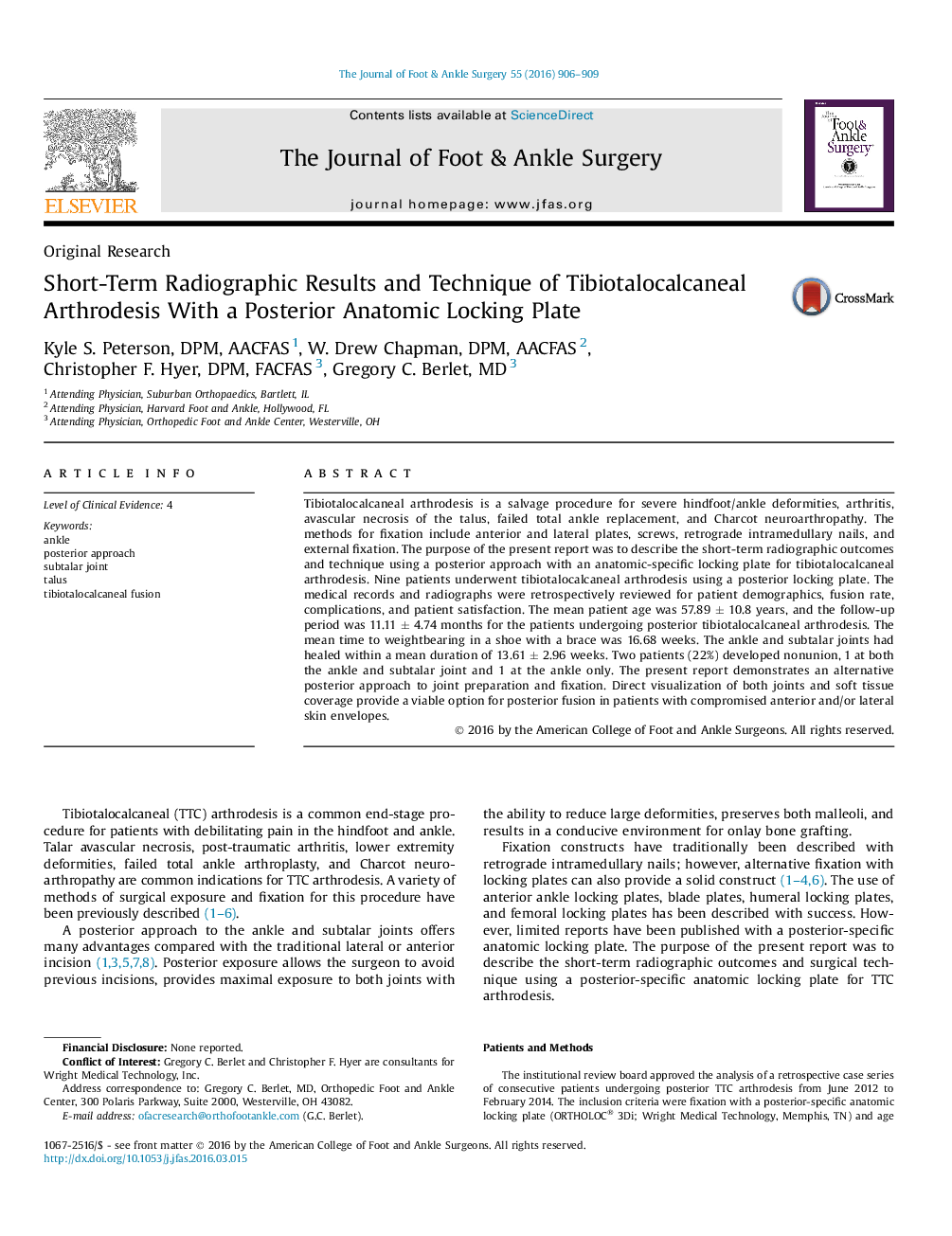| Article ID | Journal | Published Year | Pages | File Type |
|---|---|---|---|---|
| 2712721 | The Journal of Foot and Ankle Surgery | 2016 | 4 Pages |
Tibiotalocalcaneal arthrodesis is a salvage procedure for severe hindfoot/ankle deformities, arthritis, avascular necrosis of the talus, failed total ankle replacement, and Charcot neuroarthropathy. The methods for fixation include anterior and lateral plates, screws, retrograde intramedullary nails, and external fixation. The purpose of the present report was to describe the short-term radiographic outcomes and technique using a posterior approach with an anatomic-specific locking plate for tibiotalocalcaneal arthrodesis. Nine patients underwent tibiotalocalcaneal arthrodesis using a posterior locking plate. The medical records and radiographs were retrospectively reviewed for patient demographics, fusion rate, complications, and patient satisfaction. The mean patient age was 57.89 ± 10.8 years, and the follow-up period was 11.11 ± 4.74 months for the patients undergoing posterior tibiotalocalcaneal arthrodesis. The mean time to weightbearing in a shoe with a brace was 16.68 weeks. The ankle and subtalar joints had healed within a mean duration of 13.61 ± 2.96 weeks. Two patients (22%) developed nonunion, 1 at both the ankle and subtalar joint and 1 at the ankle only. The present report demonstrates an alternative posterior approach to joint preparation and fixation. Direct visualization of both joints and soft tissue coverage provide a viable option for posterior fusion in patients with compromised anterior and/or lateral skin envelopes.
